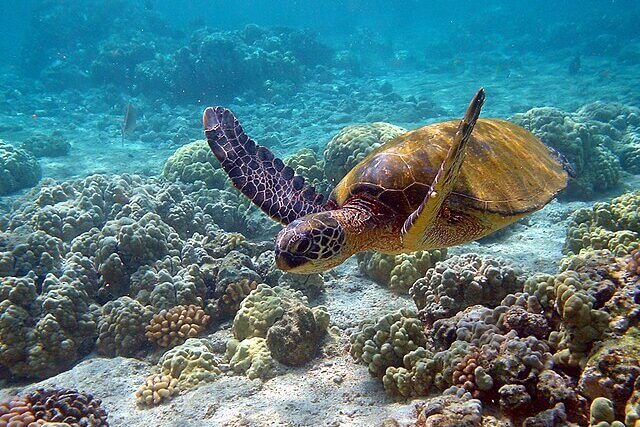
The green turtle has been brought back from the brink of extinction in what scientists are hailing as a major conservation success.
Once hunted relentlessly for turtle soup, prized eggs and decorative shells, the ancient mariner’s numbers collapsed, leading to its listing as Endangered in the 1980s.
Now, after decades of concerted global effort – from protecting nests and releasing hatchlings to reducing accidental capture in fishing nets – new data show that green turtle populations are making a remarkable recovery.
“We must use this win as a catalyst to achieve numerous other wins,” said Dr Nicolas Pilcher of the Marine Research Foundation, a non-profit based in Sabah, Malaysia.
Named for the greenish hue of their body fat, a result of their largely plant-based diet, green turtles are among the largest sea turtle species. They are one of seven living species of sea turtles, two of which remain critically endangered.
Professor Brendan Godley, a conservation scientist at the University of Exeter, said many green turtle populations worldwide are rebounding after 50 years of protection. While continued effort is vital, he said it gives cause for optimism.
“Sea turtles are iconic and charismatic species… they inspire people,” he said. “Hundreds of thousands of people have been working for decades to try and look after these creatures, and undoubtedly, it has had an impact.”
Conservation measures have included beach patrols, safeguarding females and eggs at nesting sites, releasing young turtles into the ocean, education campaigns to reduce poaching, and modifications to fishing gear to prevent accidental bycatch.
The latest update to the IUCN Red List of Threatened Species was unveiled at the International Union for the Conservation of Nature (IUCN) World Congress in Abu Dhabi.
The list now covers 172,620 species, with 48,646 threatened with extinction. Species are reassessed as new data reveal changes in population, habitat or threats — moving to higher-risk categories such as Endangered when declines are recorded, or to lower-risk categories like Near Threatened or Least Concern when recovery occurs.
The green turtle has now been reclassified from Endangered to Least Concern — a rare and significant upgrade. However, scientists caution that numbers remain far below historic levels, with ongoing pressures from fishing, habitat loss and climate change.
In places such as Raine Island, Australia, hatchling survival rates remain low, underscoring the need for continued conservation action.
But while the green turtle’s story offers hope, other species are faring worse. Arctic seals, for example, are sliding closer to extinction as sea ice melts. The hooded seal has moved from Vulnerable to Endangered, while bearded and harp seals are now classed as Near Threatened.
Arctic seals rely on sea ice for breeding, resting and feeding — and as the ice disappears, so too does their chance of survival.
——————————————————————————
At Natural World Fund, we are passionate about restoring habitats in the UK to halt the decline in our wildlife.

